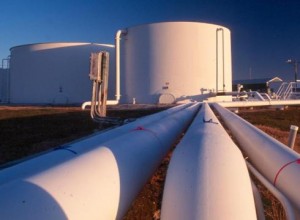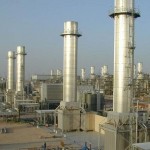 Natural gas rose slightly on Friday after falling the previous two days as the Energy Information Administration reported a record weekly build for last week, while the weather outlook for the second half of June remained unclear.
Natural gas rose slightly on Friday after falling the previous two days as the Energy Information Administration reported a record weekly build for last week, while the weather outlook for the second half of June remained unclear.
Natural gas for delivery in July traded 0.46% higher at $2.638 per million British thermal units at 08:45 GMT, shifting in a daily range between $2.639 and $2.625. The contract plunged to a fresh one-month low of $2.556 yesterday before settling the day 0.3% lower at $2.626.
The decline was fueled by the Energy Information Administration reporting that US natural gas stockpiles increased by 132 billion cubic feet in the week ended May 29th, exceeding analysts median projections for a 121-bcf build. This sharply exceeded the five-year average gain for the week of 92 bcf and the year-ago increase of 118 bcf.
Total gas held in US storage hubs amounted to 2.233 trillion cubic feet, flipping into a surplus of 1.0% to the five-year average of 2.211 trillion from a 0.8% deficit a week earlier. Supplies were also at a surplus of 50.7% to the year-ago inventories of 1.482 trillion.
Next weeks report, due out on June 11th, will also reflect a much larger than normal build and expand surpluses. The five-year average inventory gain for the week ended June 5th is 89 bcf, while stockpiles rose by 109 bcf a year earlier.
Weather
According to NatGasWeather.com, natural gas demand in the US will be low compared to normal across the North through June 11th, while remaining moderate over the South, with a reaffirmed outlook for the following seven days for a warm North and very warm to hot East, South and West.
High pressure over the South will extend its coverage this weekend, with much of the country set to see increasing temperatures. Florida and the southern US will drive the countrys strongest cooling demand as highs reach the upper 80s and lower 90s. Most of the North will warm into the 70s and 80s, apart from northern New England and the upper Great Lakes which will remain under the influence of Canadian weather systems.
As next week progresses, the South and Southeast will remain the countrys hottest regions, with highs peaking in the mid 90s to lower 100s. Conditions over the West will be somewhat mixed, while additional weather systems arrive over the Great Lakes and Northeast to bring comfortable temperatures.
As active weather with showers and thunderstorms continues across the US into the third week of June, the eastern, southern and western US will remain very warm, while the north-central US enjoys seasonal or slightly lower readings as Canadian weather systems arrive.
The main focus remains on how the pattern develops in the second part of June, with one scenario being that high pressure over the South expands northward and brings higher-than-usual temperatures over even more US regions, while the other calls for renewed cooler Canadian weather systems that would keep readings across the north-central US near normal, curbing cooling demand.
Readings
According to AccuWeather.com, the high in New York today will be 68 degrees Fahrenheit, 9 below usual, before establishing in the upper 70s and low 80s as of tomorrow. Chicago will reach 67 degrees today and 72 tomorrow, compared to the average 77, before warming up into the low-mid 80s afterwards.
Down South, Houston will peak at 90-93 degrees through June 8th, above the average 89, before easing a few degrees the following two weeks. On the West Coast, highs in Los Angeles will be at 71-72 degrees through June 6th, below the usual 76, followed by a warm-up into the upper 70s and lower 80s.
Pivot points
According to Binary Tribune’s daily analysis, July natural gas futures’ central pivot point stands at $2.619. In case the contract penetrates the first resistance level at $2.682 per million British thermal units, it will encounter next resistance at $2.738. If breached, upside movement may attempt to advance to $2.801 per mBtu.
If the energy source drops below its S1 level at $2.563 per mBtu, it will next see support at $2.500. In case the second key support zone is breached, the power-station fuel’s downward movement may extend to $2.444 per mBtu.
In weekly terms, the central pivot point is at $2.730. The three key resistance levels are as follows: R1 – $2.827, R2 – $3.012, R3 – $3.109. The three key support levels are: S1 – $2.545, S2 – $2.448, S3 – $2.263.





